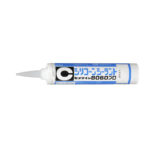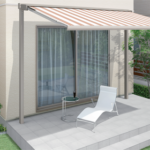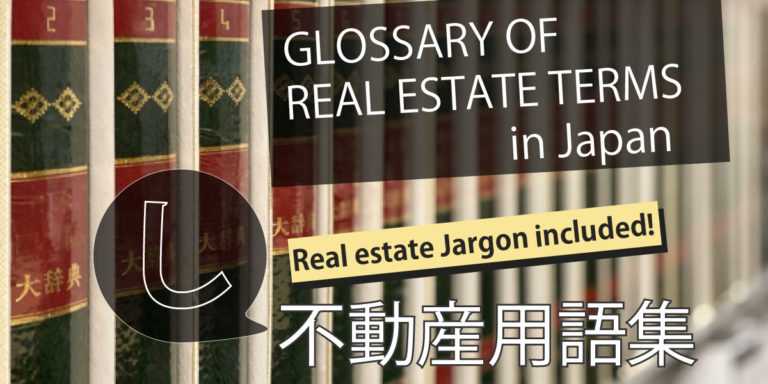- 1 Real estate Terms -し(SI),じ(JI)-
- 1.0.1 CSアンテナ[CS ANTENNA] (しーえすあんてな)
- 1.0.2 シーリング [SEALING] (しーりんぐ) = コーキング [CAULKING] (こーきんぐ)
- 1.0.3 シーリングファン [CEILING FAN] (しーりんぐふぁん)
- 1.0.4 シーリングライト [CEILING LIGHT] (しーりんぐらいと)
- 1.0.5 地上げ [JIAGE] (じあげ)
- 1.0.6 地上げ屋 [JIAGE YA] (じあげや)
- 1.0.7 シェード [SHADE] (しぇーど) = オーニング [AWNING] (オーニング)
- 1.0.8 市街化区域 [SHIGAIKA KUIKI] (しがいかくいき)
- 1.0.9 市街化調整区域 [SHIGAIKA CHOUSEI KUIKI] (しがいかちょうせいくいき)
- 1.0.10 敷金 [SHIKIKIN] (しききん)
- 1.0.11 敷引 [SHIKIBIKI] (しきびき)
- 1.0.12 時効 [JIKOU] (じこう)
- 1.0.13 事故物件 [JIKOBUKKE] (じこぶっけん)
- 1.0.14 史跡 [SHISEKI] (しせき)
- 1.0.15 実印 [JITSUIN] (じついん)
- 1.0.16 漆喰 [SHIKKUI] (しっくい)
- 1.0.17 シックハウス症候群 [SICK HOUSE SHOUKOUGUN] (しっくはうすしょうこうぐん)
- 1.0.18 シックハウス対策 [SICK HOUSE TAISAKU] (しっくはうすたいさく)
- 1.0.19 指定避難場所 [SHITEI HINAN BASHO] (していひなんばしょ)
- 1.0.20 私道 [SHIDOU] (しどう)
- 1.0.21 地袋 [JIBUKURO] (じぶくろ)
- 1.0.22 司法書士 [SHIHOU SHOSHI] (しほうしょし)
- 1.0.23 社印 [SHAIN] (しゃいん)
- 1.0.24 借地権 [SHAKUCHI KEN] (しゃくちけん)
- 1.0.25 借地借家法 [SHAKUCHI SHAKKA HOU] (しゃくちしゃっかほう)
- 1.0.26 借家 [SHAKUYA] (しゃくや)
- 1.0.27 収益物件 [SYUEKI BUKKEN] (しゅうえきぶっけん)
- 1.0.28 重要事項説明書 [JYUYOUJIKOU SETSUMEISHO] (じゅうようじこうせつめいしょ)
- 1.0.29 修繕積立金 [SYUZEN TSUMITATE KIN] (しゅうぜんつみたてきん)
- 1.0.30 住宅性能表示制度 [JYUTAKU SEINOU HYOUJI SEIDO] (じゅうたくせいのうひょうじせいど)
- 1.0.31 社印 [SHAIN] (しゃいん)
- 1.0.32 車庫証明 [SHAKO SHOUMEI] (しゃこしょうめい)
- 1.0.33 上棟式 [JOUTOU SHIKI] (じょうとうしき)
Real estate Terms -し(SI),じ(JI)-
CSアンテナ[CS ANTENNA] (しーえすあんてな)
An antenna that receives broadcasts using Communication Satellite (CS).
*BSアンテナ[BS ANTENNA] (びーえすあんてな): An antenna that receives broadcasts using Broadcasting Satellite (BS).
シーリング [SEALING] (しーりんぐ) = コーキング [CAULKING] (こーきんぐ)
 Construction to fill in the seams and gaps in a building. It prevents rainwater from entering through seams and gaps, and expands and contracts when it vibrates. It is called CAULKING as well. [Image is cited from CEMEDINE ]
Construction to fill in the seams and gaps in a building. It prevents rainwater from entering through seams and gaps, and expands and contracts when it vibrates. It is called CAULKING as well. [Image is cited from CEMEDINE ]
シーリングファン [CEILING FAN] (しーりんぐふぁん)
A rotating vane attached to the ceiling. It functions to circulate the air inside the room and reduce the temperature difference between the upper and lower floors.
シーリングライト [CEILING LIGHT] (しーりんぐらいと)
Lighting fixtures that attach directly to the ceiling to illuminate a wide area.
*A light fixture suspended from the ceiling is called a ペンダントライト [PENDANT LIGHT], a localized light fixture is called a スポットライト[SPOTLIGHT], and a fixture embedded in the ceiling is called a ダウンライト[DOWN LIGHT].
地上げ [JIAGE] (じあげ)
This refers to the purchase of land by a real estate company in order to secure land for a business.
地上げ屋 [JIAGE YA] (じあげや)
A person or company that negotiates with a landowner or tenant to acquire land in order to secure a site for construction. During the bubble economy, the buying and selling of real estate through forceful methods became a problem.
シェード [SHADE] (しぇーど) = オーニング [AWNING] (オーニング)
 A piece of equipment or curtain fabric that creates shade by blocking light. Some of them can be moved up and down.
A piece of equipment or curtain fabric that creates shade by blocking light. Some of them can be moved up and down.
[ Image cited from LIXIL ]
市街化区域 [SHIGAIKA KUIKI] (しがいかくいき)
An area that has already formed an urban area and an area that should be prioritized and systematically urbanized within approximately 10 years, as determined by city planning.
市街化調整区域 [SHIGAIKA CHOUSEI KUIKI] (しがいかちょうせいくいき)
An area designated by city planning to control urbanization. In the urbanization control area, permission for development is required to change the land shape. The development of residential land is not allowed except under special circumstances even if you try to obtain permission for development.
Thus, regulations are applied to discourage development and building activities in the urbanization control area.
敷金 [SHIKIKIN] (しききん)
Money deposited by the tenant to the landlord at the time of entering into a new lease of a building for the following purposes
1. security for non-payment of rent or non-payment of rent
2. Advance payment of repair and restoration costs to be borne by the tenant according to the contract
When the contract is terminated in the future, the remaining amount after deducting the amounts mentioned in 1. and 2. above will be returned to the tenant. In the Kansai region, this is the practice of “Shikibiki”.
敷引 [SHIKIBIKI] (しきびき)
A system whereby a certain portion of the security deposit paid by the tenant to the landlord is not returned to the tenant. This non-returnable amount. This is a practice only in the Kansai region.
時効 [JIKOU] (じこう)
A system to determine the legal relationship in line with the factual situation, with respect to which a certain factual situation has continued for a certain period of time.
事故物件 [JIKOBUKKE] (じこぶっけん)
A residential building that has been the site of a dispute over rights or an accident, such as flooding, suicide, or bankruptcy. Transaction prices are often low to reflect the circumstances.
史跡 [SHISEKI] (しせき)
Monuments, such as shell mounds, burial mounds, ruins of capital cities, castle sites, and old houses, which are of high historical and academic value to Japan.
実印 [JITSUIN] (じついん)
An individual’s seal that has been registered with the mayor of the city or ward in advance.
A seal that can be issued with a 印鑑証明 [INKAN SHOUMEI] (いんかんしょうめい) “seal certificate”.
漆喰 [SHIKKUI] (しっくい)
A mixture of slaked lime and glue.
It has been used as a plastering material since ancient times in Japan.
シックハウス症候群 [SICK HOUSE SHOUKOUGUN] (しっくはうすしょうこうぐん)
Sick house syndrome : Illnesses caused by being inside a house with no apparent cause
シックハウス対策 [SICK HOUSE TAISAKU] (しっくはうすたいさく)
Controlling indoor concentrations of chemicals to prevent Sick house syndrome.
指定避難場所 [SHITEI HINAN BASHO] (していひなんばしょ)
A facility designated by the mayor of a municipality for residents and others who have been evacuated due to the risk of disaster to stay until the risk of disaster is eliminated, or for residents and others who are unable to return to their homes due to a disaster to stay temporarily
私道 [SHIDOU] (しどう)
Roads owned by private individuals or corporations. A 私道 [SHIDOU] “private road” can become a 建築基準法上の道路 [KENCHIKU KIJUN HOU JOU NO DOURO] “Road on building code” by going through certain procedures.
地袋 [JIBUKURO] (じぶくろ)
A low-height closed cupboard that touches the floor.
司法書士 [SHIHOU SHOSHI] (しほうしょし)
Professionals who prepare applications for registration of items to be registered in the real estate register at the request of the applicant for registration and act as an agent of the applicant for registration
社印 [SHAIN] (しゃいん)
A seal of a company, which is neither a representative seal nor a bank seal. It is also called 角印 [KAKUIN] (かくいん)”square seal” because the shape is usually a square. Stamp on a quotation, invoice, etc.
借地権 [SHAKUCHI KEN] (しゃくちけん)
借地権 [SHAKUCHI KEN] (しゃくちけん) ”a tenancy” is one of the following two rights
1. a superficies established for the purpose of owning a building
2. Land lease rights established for the purpose of owning a building
Therefore, the land lease right established for the purpose of material storage is not a “SHAKUCHI KEN”.
In addition, the land lease right established for the purpose of using as an open-air parking lot is also not a “SHAKUCHI KEN”.
借地借家法 [SHAKUCHI SHAKKA HOU] (しゃくちしゃっかほう)
A special law under the Civil Code that makes special provisions for land leases and building lease contracts, etc.
借家 [SHAKUYA] (しゃくや)
A house to rent and live in. In contrast, a house that one owns and lives in is called 持ち家 [MOCHIIE] (もちいえ).
収益物件 [SYUEKI BUKKEN] (しゅうえきぶっけん)
Real estate owned for the purpose of earning rental income
重要事項説明書 [JYUYOUJIKOU SETSUMEISHO] (じゅうようじこうせつめいしょ)
JYUYO means important, JIKO means Issues. This could be translated as the Property Disclosure Statement of Important Issues.
The lease contract and Important Points Explanation of Property to be Leased will be prepared and issued by the real estate company that acted as an intermediary based on the contract.
Important Points Explanation of Property to be Leased has to be explained verbally by a real estate agent who has to be a licensed 宅地建物取引士[TAKUCHI TATEMONO TORIHIKISHI(real estate agent licensee)
Please understand that it is the role of the explanation of important matters to have the tenant grasp the contents more strongly though it becomes similar contents because it is made based on the contract.
The real estate company that acts as an intermediary will issue two copies of Important Points Explanation of Property to be Leased, and after the names and seals of the real estate company and the tenant are stamped, one copy will be given to each party. It will not be given to the landlord.
In most real estate (rental) contracts, the real estate company acts as an intermediary, but there are some cases where the contract is made directly with the landlord or where the real estate company is the direct lender.
In that case, the obligation to explain important matters is eliminated, so it is considered that the contract is made only by the contract.
修繕積立金 [SYUZEN TSUMITATE KIN] (しゅうぜんつみたてきん)
This is the money collected monthly from unit owners for the 管理組合 [KANRI KUMIAI] (かんりくみあい) “management association” to carry out repairs in accordance with the [長期修繕計画] (CHOUKI SYUZEN KEIKAKU) “long-term repair plan”.
住宅性能表示制度 [JYUTAKU SEINOU HYOUJI SEIDO] (じゅうたくせいのうひょうじせいど)
A seal of a company, which is neither a representative seal nor a bank seal. It is also called 角印 [KAKUIN] (かくいん)”square seal” because the shape is usually a square. Stamp on a quotation, invoice, etc.
社印 [SHAIN] (しゃいん)
A seal of a company, which is neither a representative seal nor a bank seal. It is also called 角印 [KAKUIN] (かくいん)”square seal” because the shape is usually a square. Stamp on a quotation, invoice, etc.
車庫証明 [SHAKO SHOUMEI] (しゃこしょうめい)
It is a document that proves where the vehicle is stored, which is required to own the vehicle. When you buy a car, you have to register the place where you will store it. Shako shoumei is required for that registration.
上棟式 [JOUTOU SHIKI] (じょうとうしき)
At this time, the guardian deities of the land and the building and the gods of artisanship are enshrined, and thank them for the progress of the construction so far and to pray for the safe completion of the building from now on.

